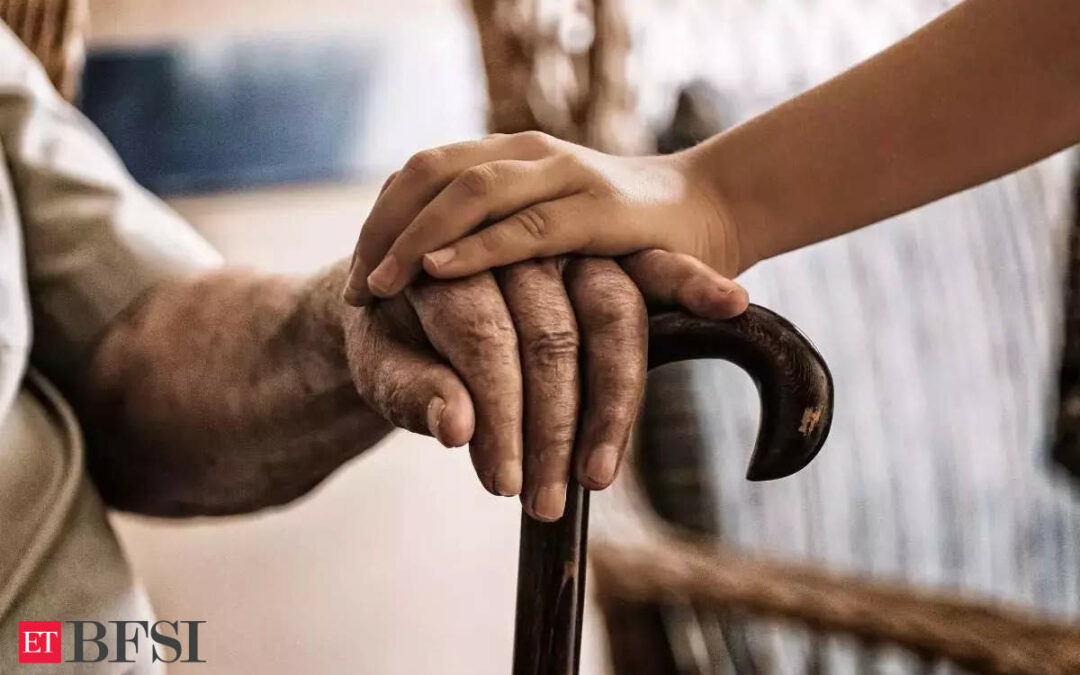While India looks with hope at its demographic dividend, a large number of young population which can drive the economy to new heights, it must contend with a challenging future prospect which China is already struggling with. A few months ago, the story of a retired 60-year-old man went viral across Chinese social media. Hao Pengfei was forced to retire at the age of 60 due to the company’s policy. Unfortunately, grappling with financial insecurity and stress, Hao’s health worsened. Despite working part-time roles as an accountant and a hotel security guard to supplement his pension, he struggled to make ends meet.
His wife was unable to work due to a long-standing injury that had further compounded their financial burdens. His story initiated a public outcry, with neitizens questioning the government’s failure to provide him the pension benefits. Hao’s tale is a reminder of prevailing conditions for senior citizens. His case represented a growing number of seniors who feel isolated and marginalized in Chinese society.
According to various news reports, China’s population, aged 60 or above, reached 296.97 million in 2023, about 21.1% of its total population, up from 280.04 million in 2022, and there are widespread concerns that its pension system cannot keep up without significant reform as the country rapidly ages.
After China’s population fell for a second consecutive year in 2023, with new births dropping to about half of those in 2016, while marriages hit a record low in 2022, China started planning to support a growing elderly population by raising benefits and basic pensions and pushing forward a private pension system. Falling fertility rates have left India staring at the spectre of looming demographic challenges that have caused big problems for other Asian powerhouses such as China and Japan.
Looking beyond the country’s present demographic dividend, the Indian government is beginning to plan for an aging India which could be a reality within a decade or two. The government is considering policy measures for senior care that aim at providing health, financial, social and digital support to its aging population, ET has reported. All stakeholder ministries, including the ministry of health and family welfare, the ministry of social justice and empowerment, ministry of finance and NITI Aayog are deliberating on the policy contours for elderly care, a senior government official has told ET. The full budget next month could unveil the government’s action plan for senior care, they said.
India’s demographic shifts
India is quite young. Its population of 1.3 billion has an average age of 29 years. Much of the country’s focus, therefore, has been on its “youth bulge” and the “demographic dividend” this should potentially yield, since the working-age population is greater than the segment of dependents. From 5% of the population in 1950, senior citizens were close to 10% of the population by 2016, and this is estimated to rise to 19% by 2050, when about one in five Indians will be 60 years or older, according to the UN
The elderly population of people over 60 years is increasing in India and could surpass the children’s population by mid-century, UNFPA’s latest “India Ageing Report 2023” revealed. Terming the rate of growth of the elderly population as “unprecedented”, the report observed, “By the end of the century, the elderly will constitute over 36% of the total population. Sharp growth in the elderly population is observed from 2010 onwards along with a decline in the age group of below 15 years, indicating rapidity of ageing in India.” The statistics can be alarming for India, which prides itself as a young nation.
An ageing citizenry is a challenge across the globe, particularly in developed economies. But due to the sheer scale of India’s population, these proportions will translate into large numbers.
India is ageing rapidly as well — the rate of growth of elderly population in 2011-21 is estimated to be 36%, three times the rate of growth of the general population. Data from HelpAge India shows that while a country like France took over 100 years to double the share of its older persons, India would take about 20 years.
A December 2021 paper, “Longitudinal Aging Study in India (LASI): New Data Resources for Addressing Aging in India,” co-authored by the economist and demographer David Bloom of Harvard TH Chan School of Public Health and others, points out, “Population aging in India is inevitable, and the country is currently ill-prepared to deal with the expanding and evolving needs of older adults. This demographic phenomenon will have important policy implications, to which the country must start adapting.”
Life expectancy at 60 years – which means the average number of years a person of 60 years old could expect to live —has increased from about 12 years in 1950 to about 18 years in 2014-18. The impact of this will be tangible across sectors, from the economy to health and societal challenges.
Taking cognisance of the change in demographics, the Employees’ Provident Fund Organisation stated in its “Vision 47” document in 2022 that India could consider increasing its retirement age, commensurate with better life expectancy, so as to ensure the viability of the pension system. Now the Budget 2024-25 could unveil measures to support the aging population which will trigger bigger efforts going forward.
India’s elderly are a vulnerable lot
While the aging population resulting from lower fertility rates and higher life expectancies is a common phenomenon in the Western countries, in India a large number of people are getting old before becoming financially well off.
One in every three elderly people reported having no income in the past year, and 32% of elderly individuals or their spouses had an annual income of less than Rs 50,000, as per a survey. Only 29% of elderly people had access to social security schemes such as old-age pensions, contributory pensions, or provident funds. Nearly 65% of elderly individuals said they were not financially secure with their current income and access to savings and investments.
Regarding health, more than half of the elderly (52%) reported facing at least one challenge related to daily living activities, and 54% suffered from two or more non-communicable diseases. The report, “Ageing in India: Exploring Preparedness & Response to Care Challenges,” revealed that only 31% of elderly people had health insurance. Most of this coverage was through the Pradhan Mantri Jan Arogya Yojana, ESI, and CGHS. Only a small number (3%) had bought commercial health insurance. The main reasons for not having health insurance were lack of awareness (32%), affordability (24%), and feeling that it wasn’t needed (12%).











